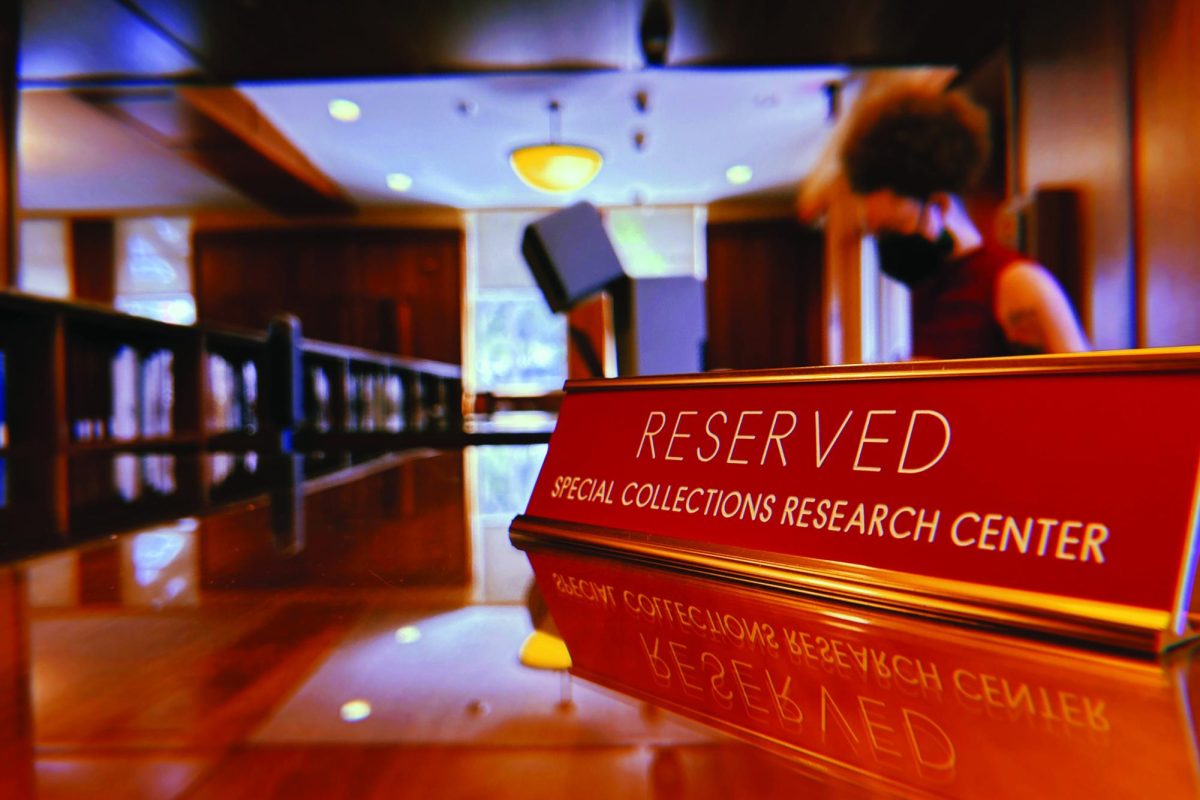Authorities tracking down anti-war paintersOn April 26, the ROTC buildings at Reynolds Coliseum, as well as an ROTC building at UNC-Chapel Hill, were covered with red paint and anti-war messages like “training murderers,” and authorities are still trying to find out who is responsible.
Campus Police tried to identify those responsible through an e-mail sent to various news outlets from the person who committed the vandalism. Crime Prevention Officer Jon Barnwell said the case has now expanded outside of Campus Police’s jurisdiction.
“We took it as far as we could and the Department of Defense has now picked it up and is working with other jurisdictions to track down the person responsible,” he said.
One of the methods authorities used in attempting to find the vandal or vandals was identifying the location of where the e-mail was sent through discovering the IP address.
“Officially, [an IP address] is an Internet Protocol address; basically it’s a number assigned to a machine so you can locate it on the network,” Jeff Webster, University Security coordinator, said. “In a sense, I guess you could sort of equate it to a phone number. It’s not the same, but it’s close.”
Webster said the numbers by themselves don’t really mean anything, but when grouped together, it can be used to identify from where an e-mail was sent.
“If you’re looking at numbers on campus, 152-dot-one-dot-anything else belongs to campus,” he said. “For a smaller company, it might be 10-dot-one-dot-one and then, only the fourth digit belongs to them to use.”
The vandal or vandals wrote in an e-mail that the purpose of the painting was to motivate the public to stop the “physical and economic wars on millions across the world.”
Posting of nude photos case droppedPhotographs of Anita Flick, a lecturer in biological sciences, appeared on The Wolf Web April 26, sparking a thread of comments and controversy over whether the nude photos were fake or real.
Crime Prevention Officer Jon Barnwell said no criminal charges are going to be filed against the person who posted the photos unless additional evidence is presented.
“Unless something new comes up, we’re finished with it,” he said. “Based on free speech and other things that were looked at, we determined there wasn’t enough there to warrant any criminal charges.”
Flick alleged April 27 that the images were manipulated and her face was placed on a body that was not her own.
Paul Cousins, director of student conduct, said he stands by his previous statement that the pictures were manipulated.
“I haven’t received any additional information about that,” he said. “I haven’t heard anymore or seen anymore about that.”
Flick said the photos, which were allegedly linked from Flick’s AOL homepage, may have stemmed from shots taken of her in 2003 following her class reunion.



